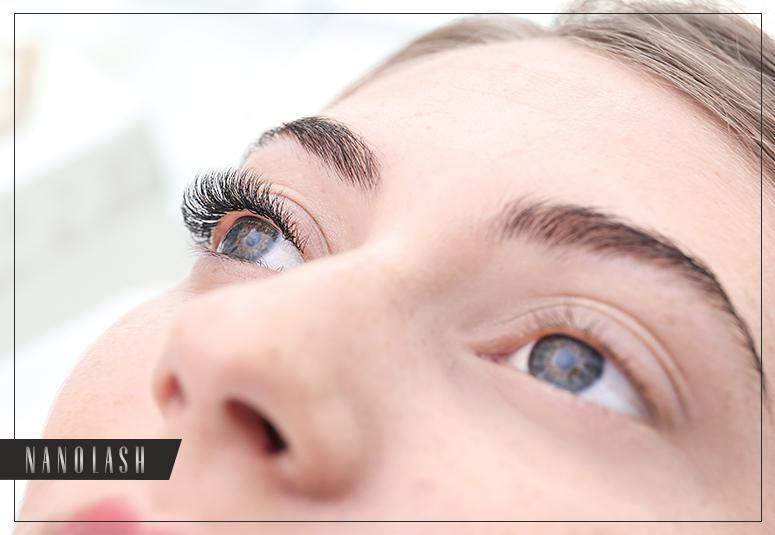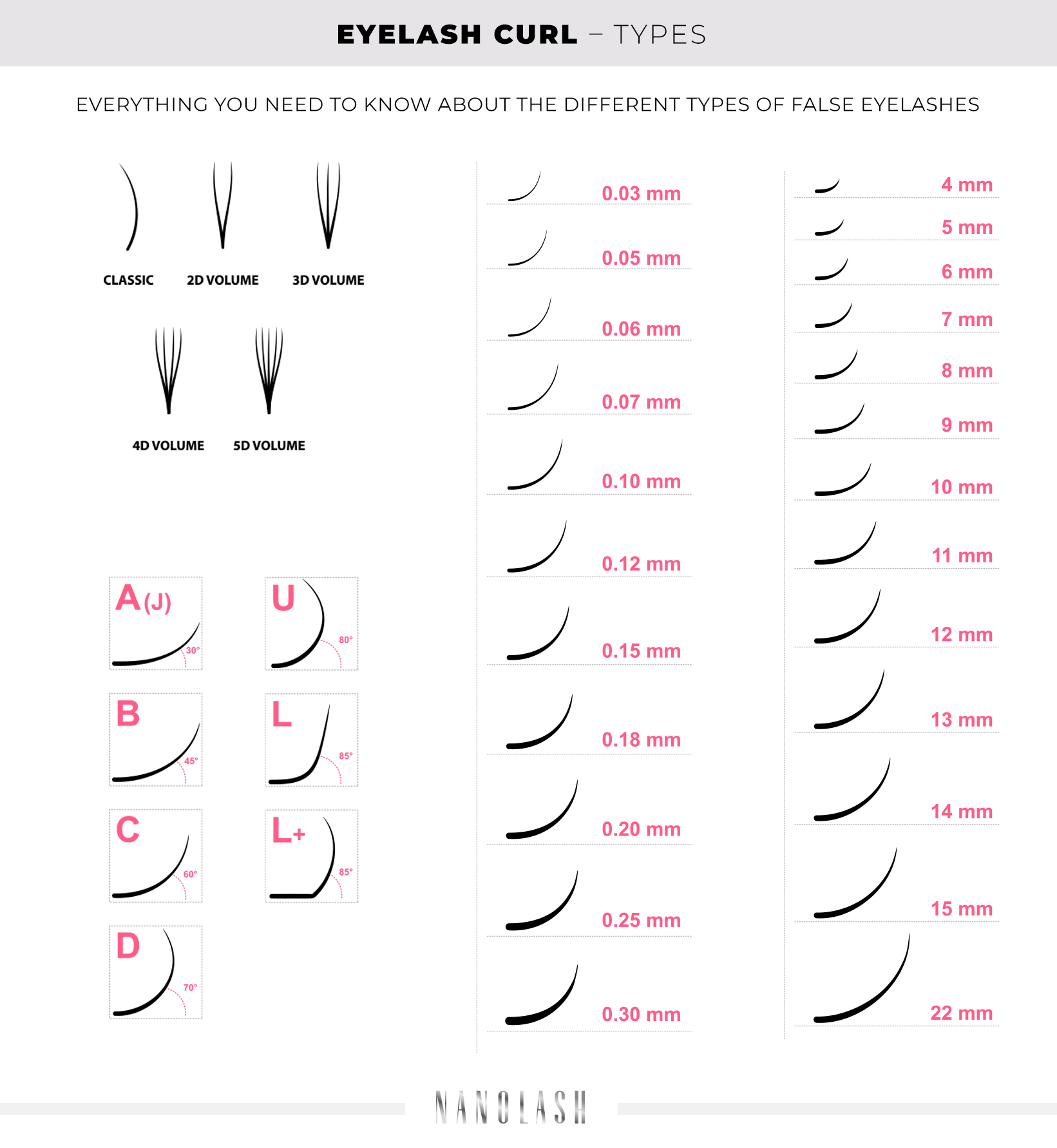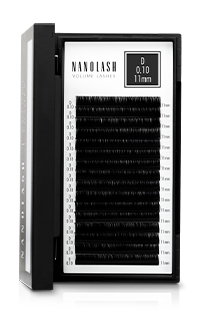
Eyelash curl - you have surely heard this term more than once. Why does eyelash shape matter so much? Is it just about how the final result will look, or is it about something more? How to choose a curl for a particular type of eye? Today we will try to round up all the necessary information. Read on to find out more.
Eyelash curl - what is it and why is it so important?
Simply put, eyelash curl refers to the shape of false eyelashes. The curl determines the angle of the lashes, which is responsible for the final results. Thanks to the right choice of eyelash curl, we can open the eye visually or make it seem more narrow, as well as camouflage beauty imperfections like droopy eyelids. This is why experienced eyelash stylists should always analyze the eye properly.
Eyelash curl - types
Types of curl are marked by letters of the alphabet, starting with A (the lowest degree of curl) and ending with U. The eyelashes have different angles but they are also varied in ways curving, especially in those non-standard curl (such as curl L). Of all these options, there are a few most popular curl types that can be found in every beauty salon, due to their versatile use and their natural effects.
- A (J) Curl - the lashes are curled at an about 30° angle which looks very subtle and will be great for owners of naturally straight eyelashes,
- B Curl - an angle of about 45° means the eyelash curl is slightly larger, but still considered natural,
- C Curl - here, the angle is about 60°, similar to curl B, the eyelashes have a very natural shape, resembling natural ones after using an eyelash curler,
- D Curl - considered the heaviest curl on the market with an angle of about 70°, which is usually chosen by clients who want slightly more noticeable effects,
- L Curl - a non-standard curl, as the lashes are quite straight up to a certain point and then suddenly curl abruptly upward - these false eyelashes are very often used in the case of owners of eyelashes that naturally grow downward. Thanks to such a specific structure of the eyelash, the stylist can achieve a non-exaggerated curled lash effect,
- M Curl - the structure is very similar to L-type eyelashes, however, this type of curl is softer than in the case of the L curl.

The right analysis of the eye
To choose the right eyelash curl that will work for the extension method chosen and to match the desired lash style, a good lash artist will give the eye a proper assessment and verify what will work best for her client. Sometimes, the eye frame alone can tell which eyelash curl will be most appropriate in a given case. It is also essential to take a good look at the client's natural eyelashes - by assessing their look, it will be much easier to choose the right thickness of false eyelashes, which will not overpower the eye, will not overburden the natural lashes and will maintain long retention.
Another very important aspect of eye analysis is for the stylist to detect natural imperfections like droopy eyelids. It is necessary to consider which eyelash style will be the best way to camouflage such flaws. Sometimes clients are unaware they even have them and come to the stylists with the extension style of their choice. As eyelash extension professionals, we should know how to explain to the client in simple terms that a particular style of eyelash extensions may not be the best idea and what to replace it with.
Eyelash curl vs. eye type
Is the choice of eyelash curl that important while applying eyelash extensions? We say: definitely yes. The specific eyelash curl is not only responsible for the appearance of the false lashes but it can also transform the look of the entire face. Eyelashes have the power to camouflage droopy eyelids or downturned eyes, but the wrong ones can also significantly intensify these effects. What's more, with false eyelashes, lash artists can make the eyes look smaller or larger, as well as create an optical illusion for eyes that are too narrow or wide apart. The same goes for deepset or protruding eyes.
Which curl is dedicated to specific eye types?
- Droopy eyelids: the most common eyelash curls are D, L, and M. A strong curl camouflages the excess skin on the eyelid. It is best to apply short or medium-length lashes to the outer corners, while you can safely reach for longer lash fans in the middle.
- Downward eyes: when the outer eye corners droop downward, creating a noticeable asymmetry with the inner corners, never apply long lashes to the outer corners, as this intensifies the effect significantly. Working your way from the inner to the outer corner, you can subtly increase the lash curl (C and D).
- Large eyes: choose lashes of optimal length (too long could give exaggerated effects). Apply them, pointing toward the inner eye corner. It is worth choosing a C curl, and you can use a D curl when you pass the edge of the iris to make the eye seem longer.
- Small eyes: choose rather short lashes (long ones would make the eye look even smaller), pointing them slightly outward, using a C or D curl you can open up the eye.
- Close-set eyes: it is best to choose a B or C curl type, and apply short lashes to the inner corners and in the middle. You can apply longer ones only to the outer eye corners to make the eye seem longer. Again, direct the lashes gently towards the outer corner of the eye.
- Wide-set eyes: do not apply long lashes at the outer corners as this will deepen the unwanted effect. It is necessary to visually bring the eyes closer together, so apply straight lashes without pointing them towards the outer eye corner. A, C, and D curl type will work best here.
- Deep-set eyes: to make them look bigger, choose a D or L curl type, using longer lashes in the middle part of the eyelid. The eye will look visually better, and you can easily camouflage droopy eyelids at the same time, which is a very common problem for owners of such eyes.
- Protruding eyes: avoid strong curl types, bet on a B and C curl, you can also experiment with A curl (J). It is best to use short eyelashes and apply longer ones only in the outer corners to make the eyes look a bit more narrow.
Which eyelash curl to choose for a particular lash extension style?
Selecting the right eyelashes for the chosen style is based on certain patterns, but a good lash stylist knows that the individual anatomy of every client's eye must also be considered. Once you've chosen a specific eyelash extension method, as well as the effect you want to achieve - it's time to choose the right eyelash curl. Here are some tips that can help you with this process.
- Flat styles, such as the arrow effect or the cat eye effect are designed to extend the outer corner of the eye. They require lashes with a gentle curl like M, L, or B type. For an adequate result that will retain its natural finish, it is better to simply avoid a strong curl.
- The doll effect, the Kim effect, the fox effect, and sometimes the cat eye effect (depending on the desired result) - these effects are designed to open up the eye a bit, so here, a bigger curl matters, and more often we use C, CC, or D lashes.
- The Russian volume effect or the Hollywood lash effect also requires mild curl types so that the results do not come out looking grotesque. The most common curl type in this case is the B curl.
- Eyelash extensions using delicate volume methods like 2D or 3D are based on the selection of different types of curls, depending on the client's preference.
- The 1:1 method with no additional lash style will also accept any curl type provided you remember to analyze the eye type first.
Eyelash curl types - can they be mixed?
Naturally! Each of our eyelashes is completely different. When applying eyelash extensions, you don't have to use only one lash type. You can mix them freely as long as you choose matching curl type and lash lengths to create the perfect lash look. When choosing eyelashes with a B or C curl type, you need to keep in mind that the C curl will look visually shorter than the B type, even if both fans are 10 mm long. The C curl lashes are just a bit more curled than the B curl ones.

